Namibia 2015
Outing 2: Rössing Mine to the Moon Landscape, Walvis Bay and Swakopmund
Moon Landscape
Our first stop of the day was in the Moon Landscape, a series of spectacular rock formations heading into the Nauklift National Park. The new Mad Max movie (note there is an autoloading video in the link) was shot in the Namib Desert and of that, parts in the Moon Landscape. Many conservationists were not happy with the way in which the film crews destroyed the lichens in the area during filming. Lichen is the sole source of food for many of the desert animals.
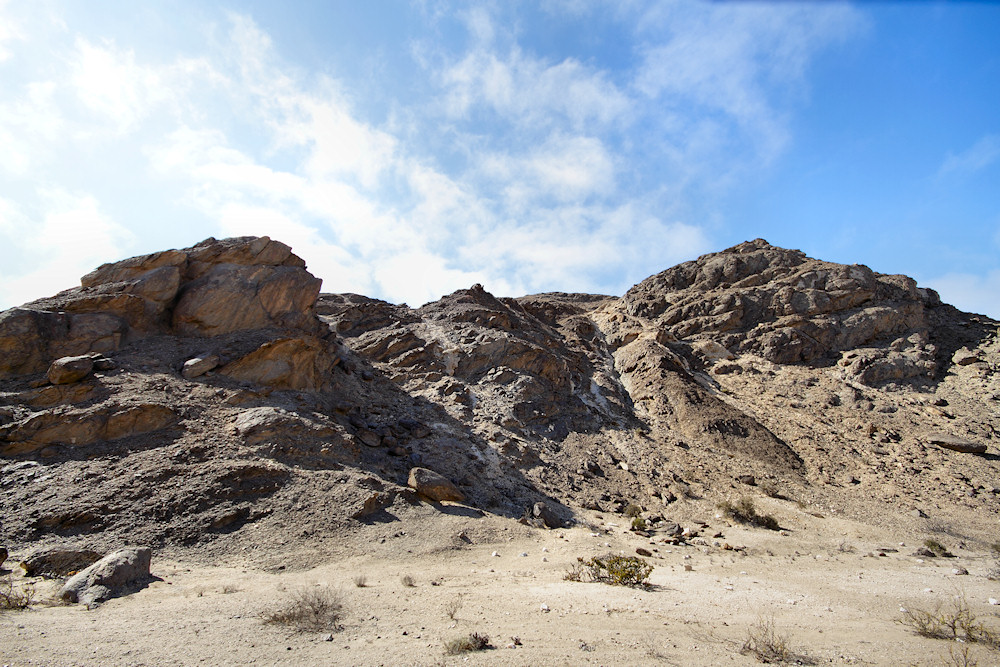
Moon Landscape
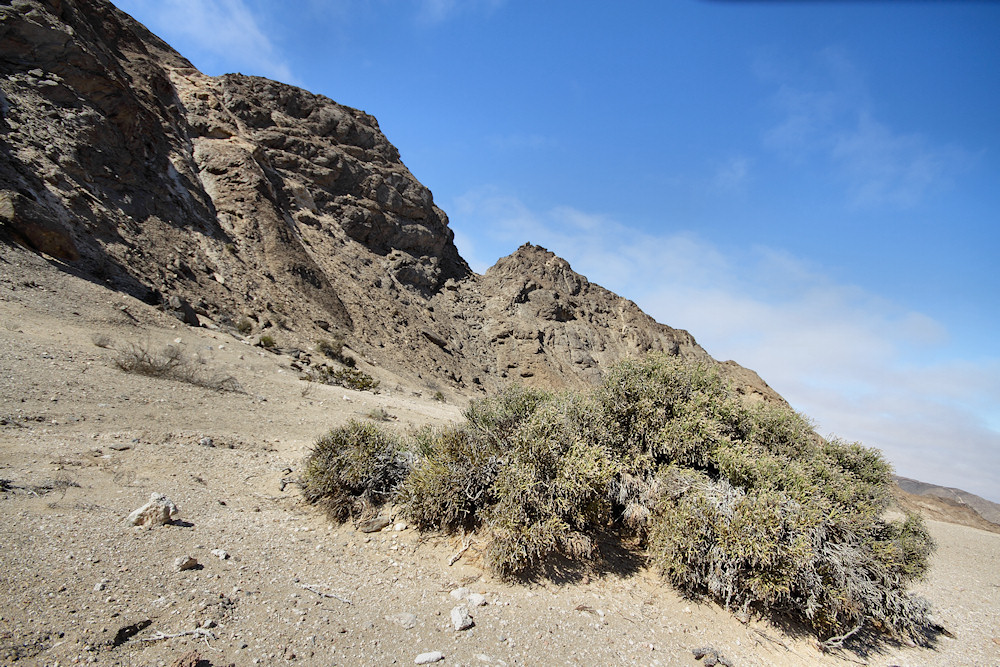 Moon Landscape
Moon Landscape
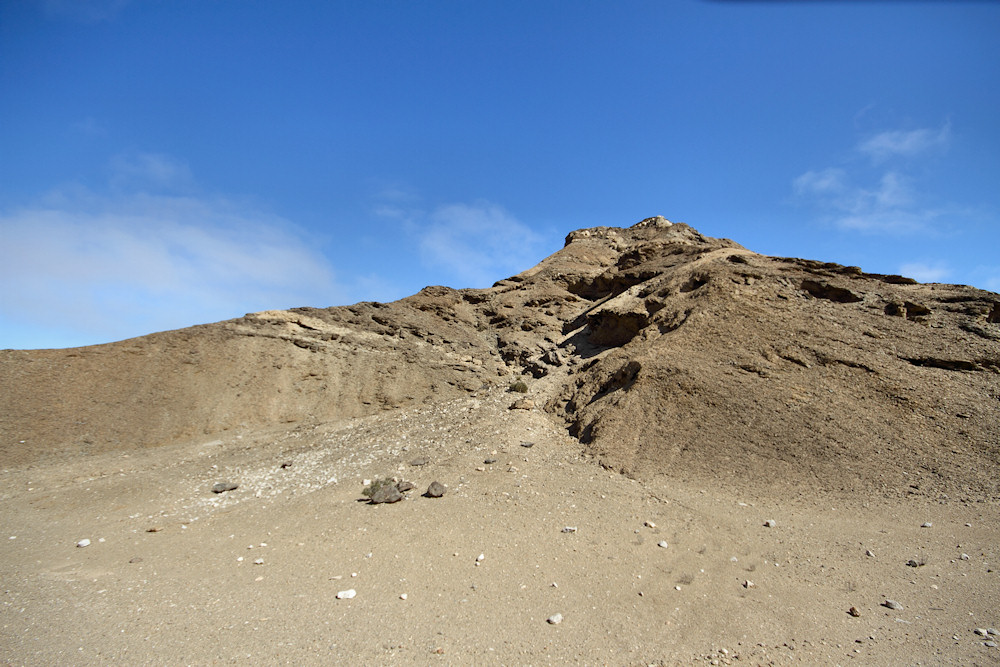 Moon Landscape
Moon Landscape
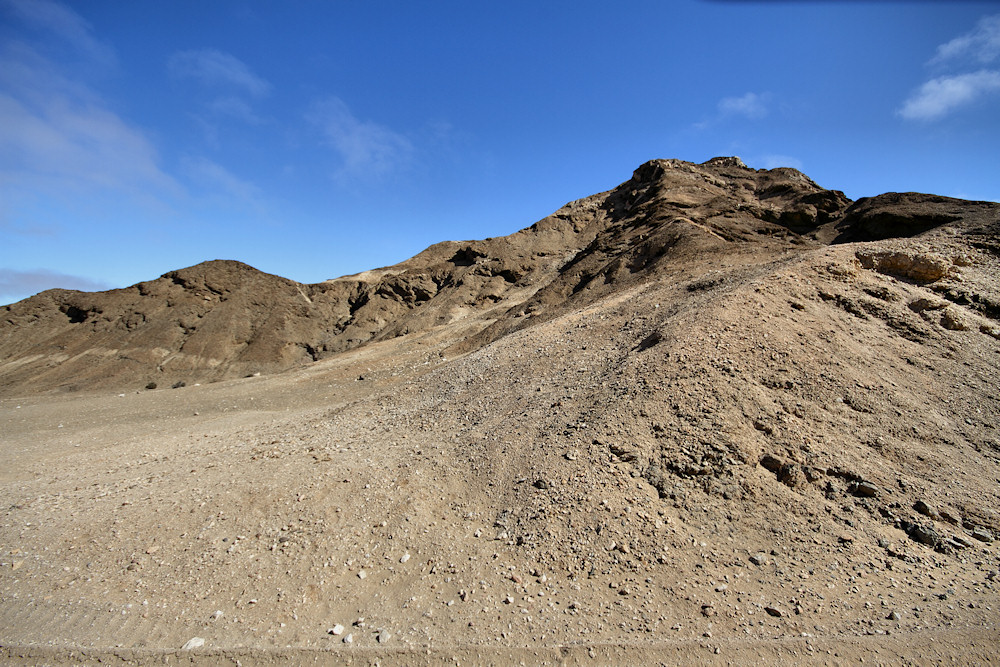 Moon Landscape
Moon Landscape
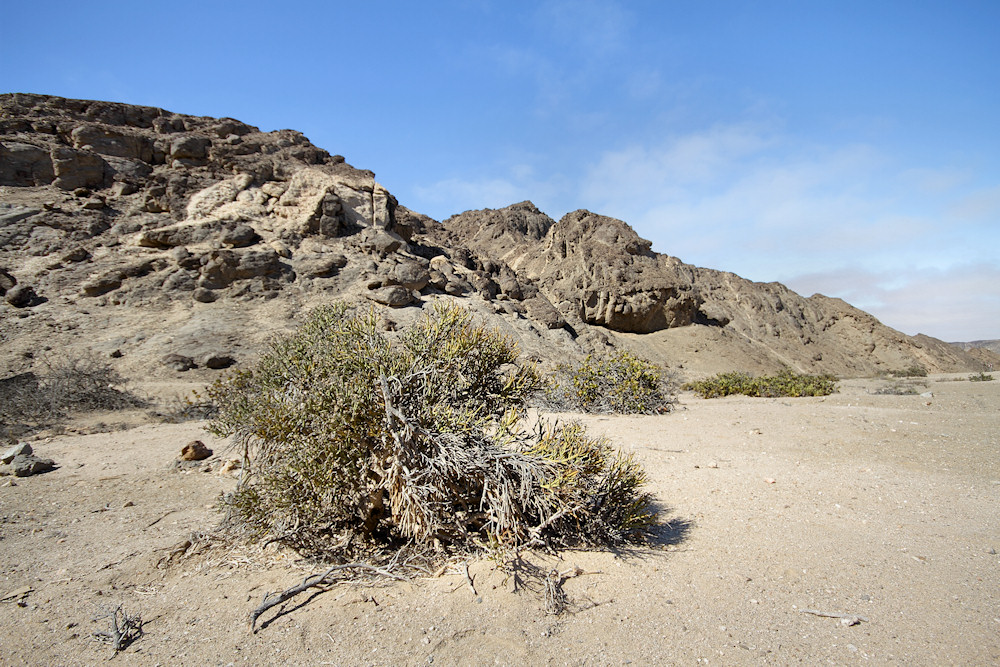 Moon Landscape
Moon Landscape
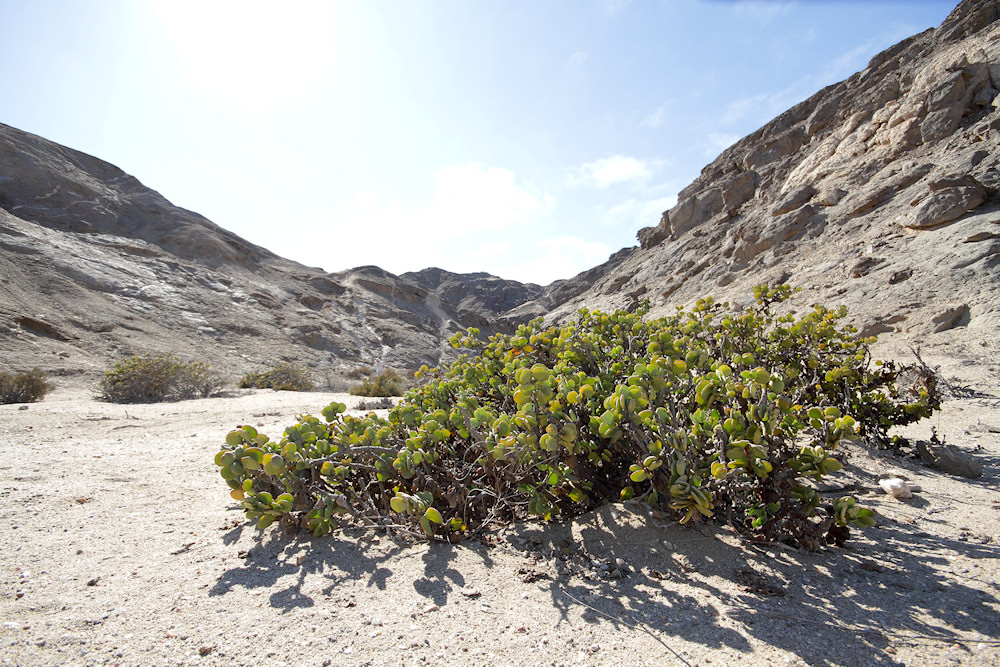 The Dollar Bush, a hardy plant found in the Namib
The Dollar Bush, a hardy plant found in the Namib
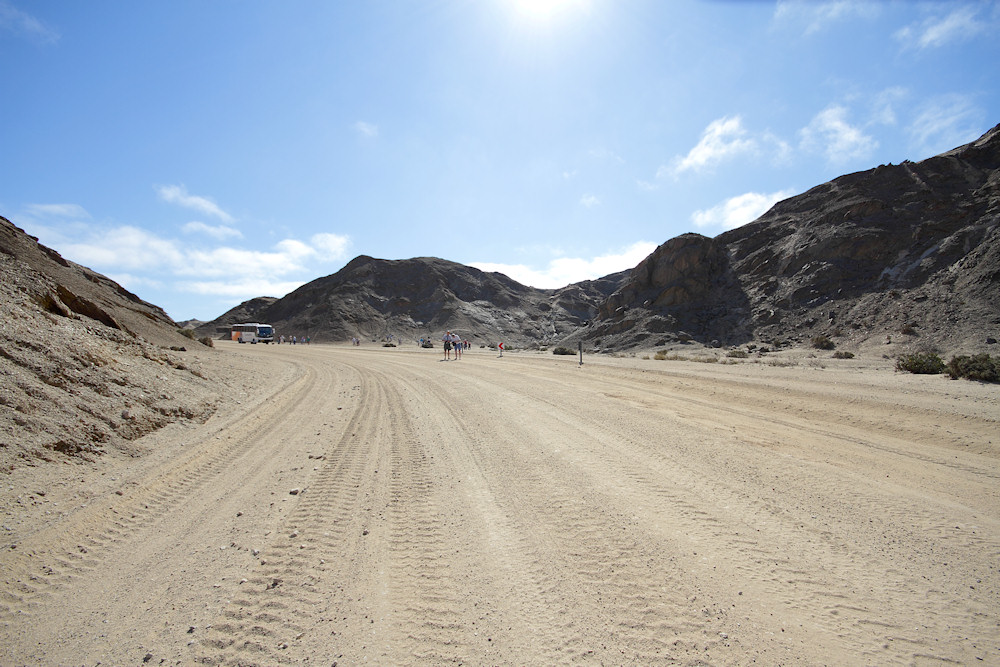 The bus and tourists dwarfed by the rock formations.
The bus and tourists dwarfed by the rock formations.
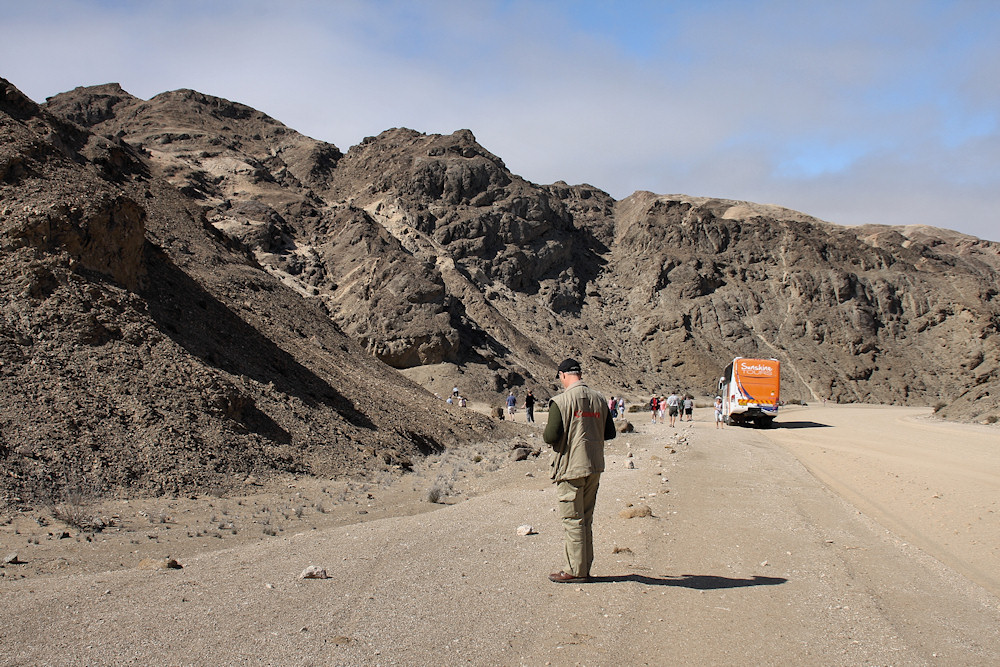
The bus and tourists dwarfed by the rock formations, with Ray checking his pics in the foreground.
Photo courtesy Pat Carr
Goanikontes Oasis
Our next stop was the Goanikontes Oasis in the Swapkopmund River bed on the outskirts of the Nauklift National Park. The stop was for tea, but I decided to skip tea and rather wander around taking more pictures of the rock formations.
The first thing that caught my eye was this dried mud patch - the sand was still soft and damp, so it begged the question "Why?", especially when it hadn't looked like it had rained in the valley.
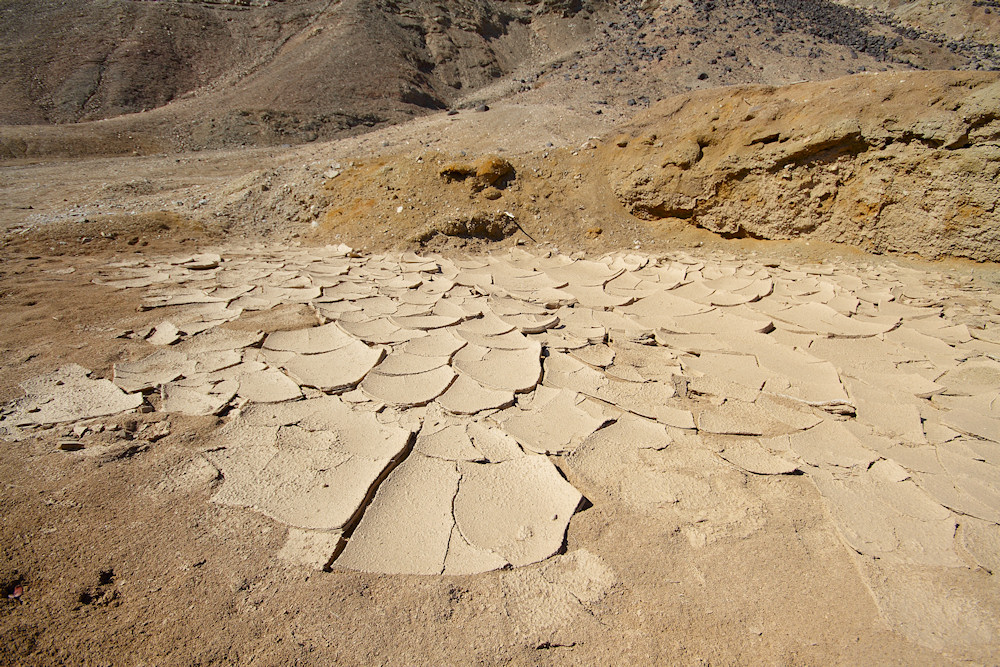
Goanikontes Oasis
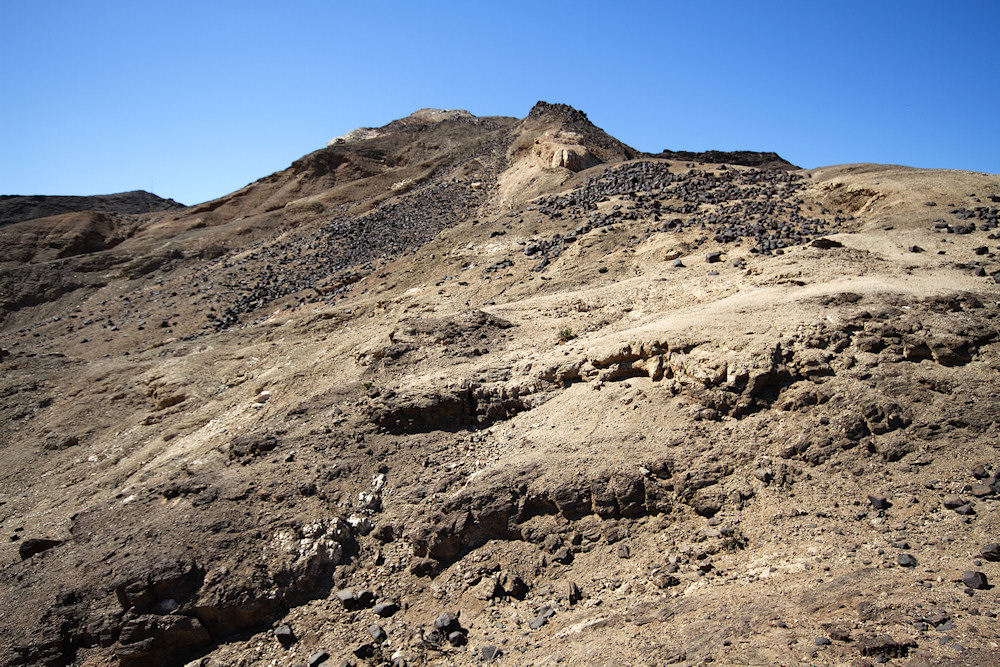
Goanikontes Oasis
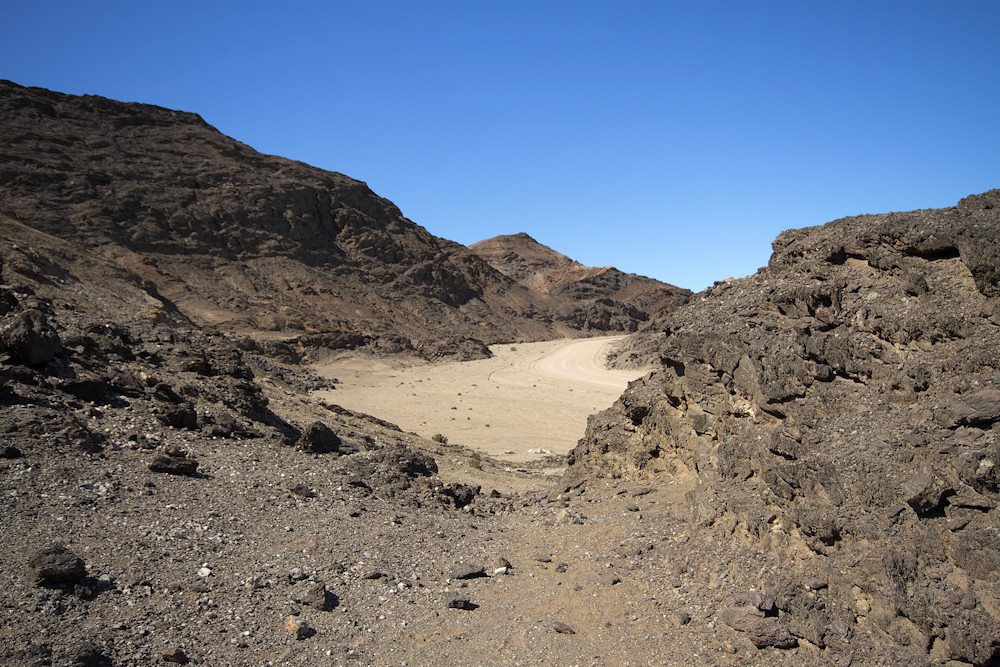
Goanikontes Oasis
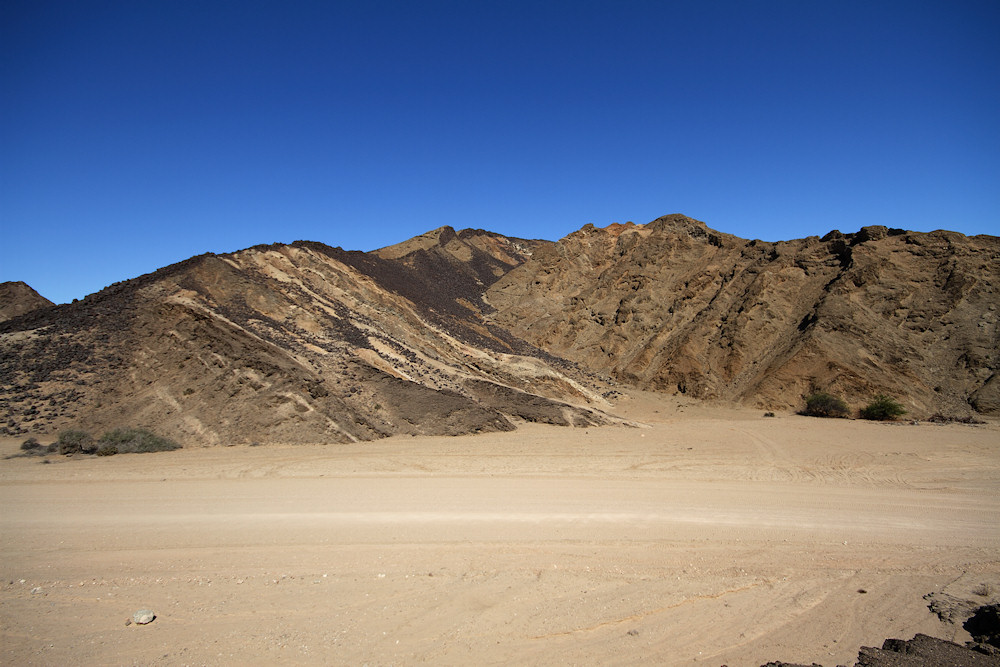
Goanikontes Oasis
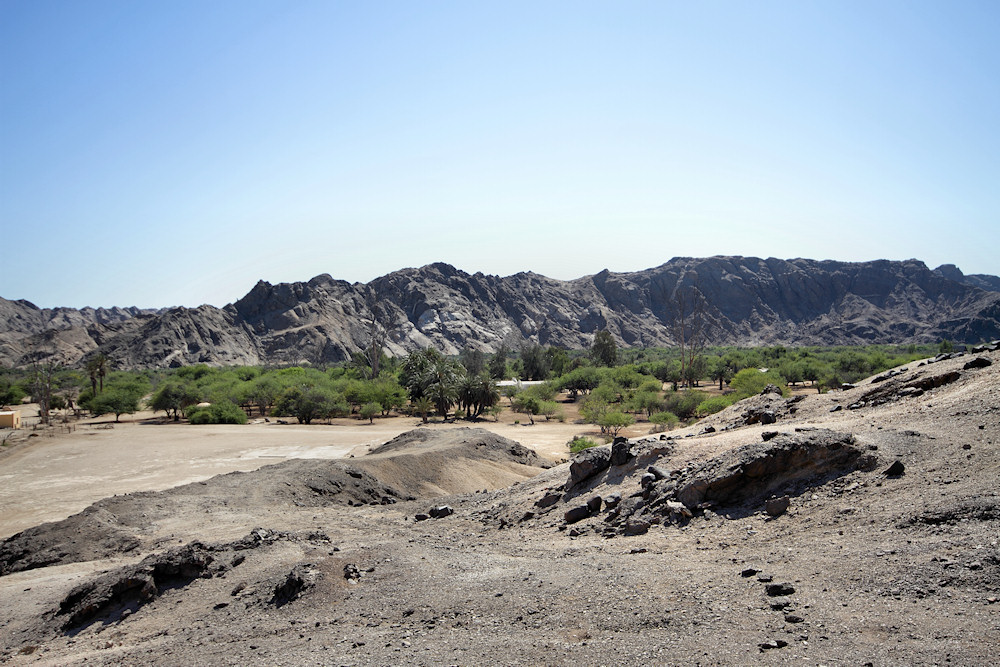
Goanikontes Oasis in the background, with what is definitely some kind of 4x4 obstacle course in the foreground.
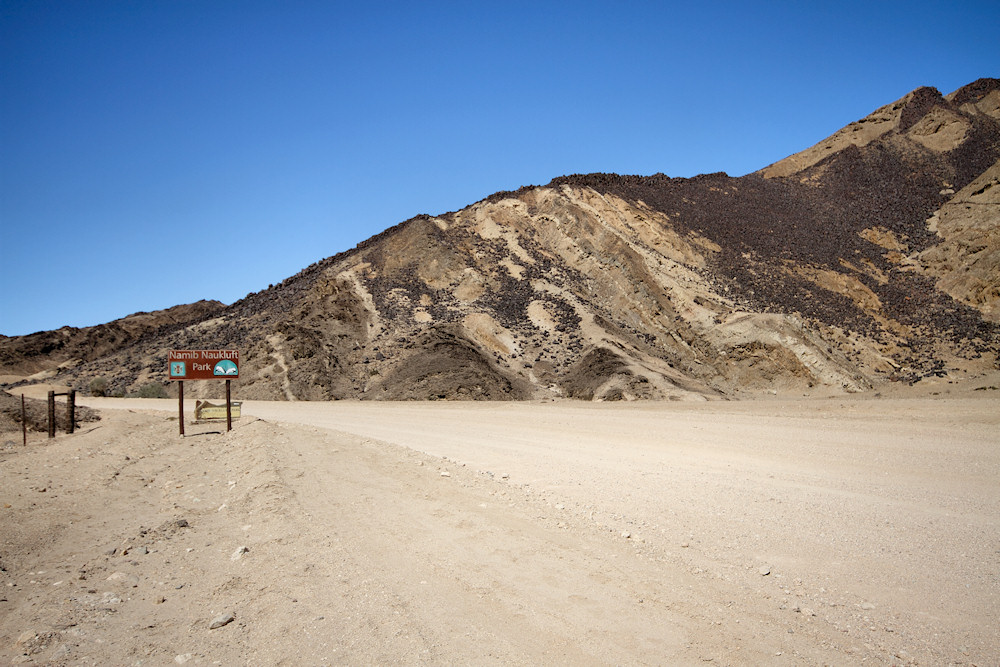
Goanikontes Oasis: the entrance to the Nauklift National Park.
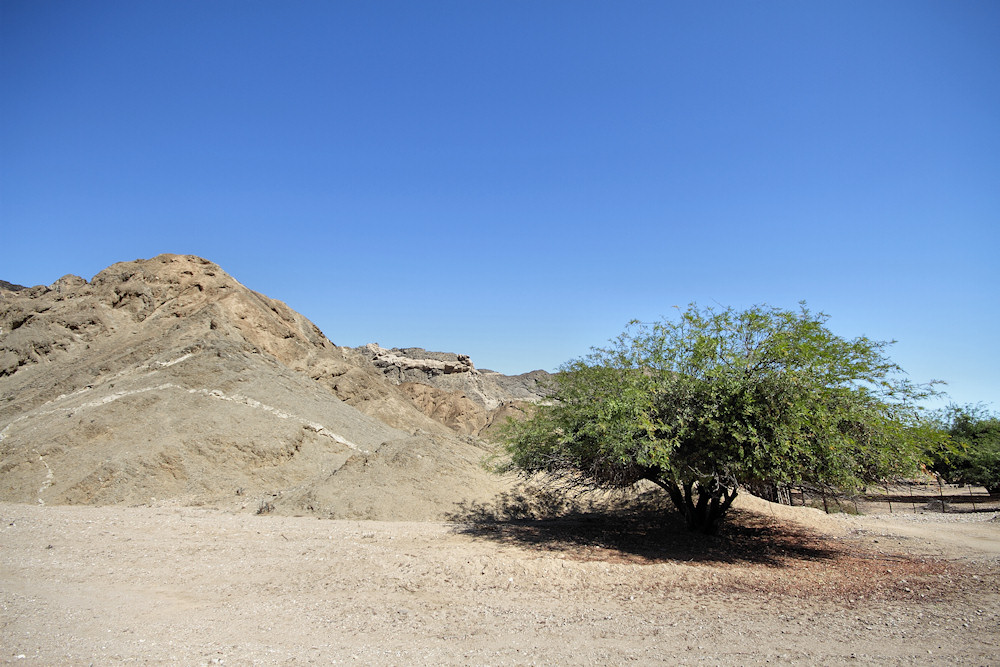
Goanikontes Oasis
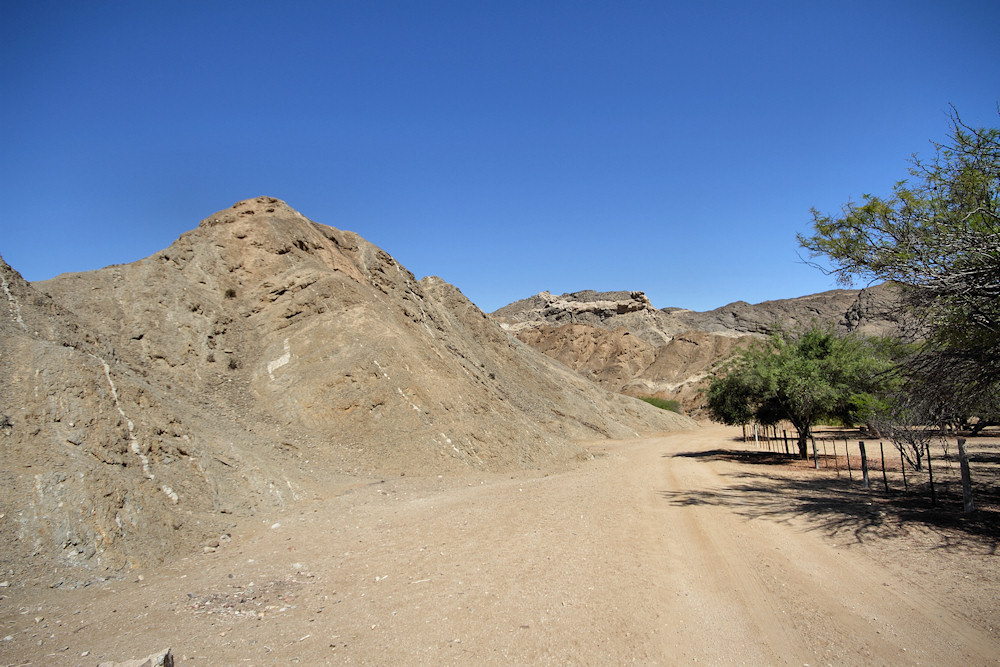
Goanikontes Oasis, with the fence to the campsite on the right.
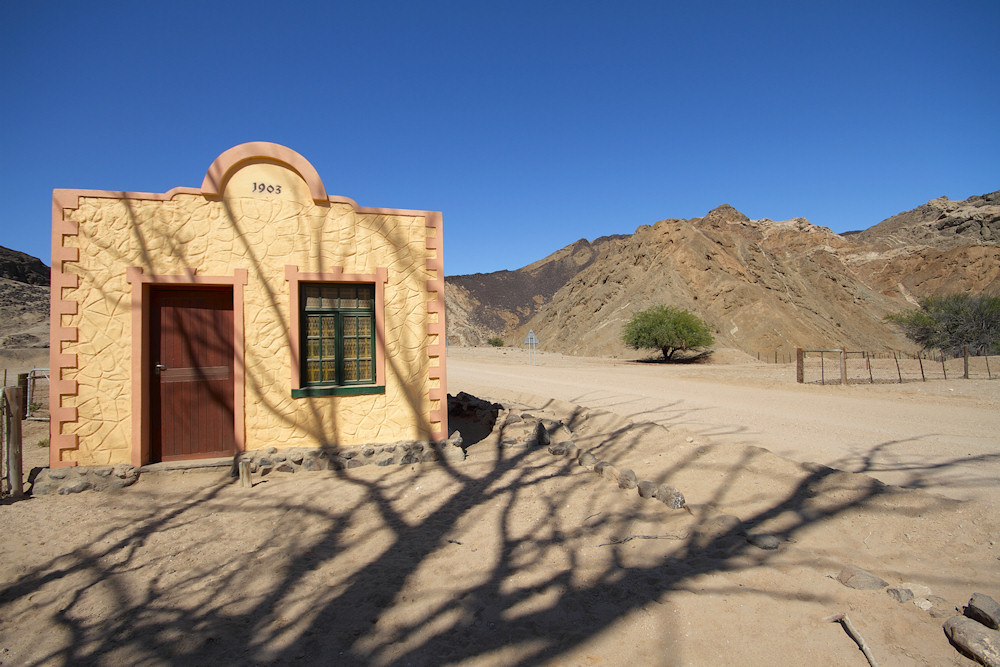
Goanikontes Oasis: the original farmstead/store
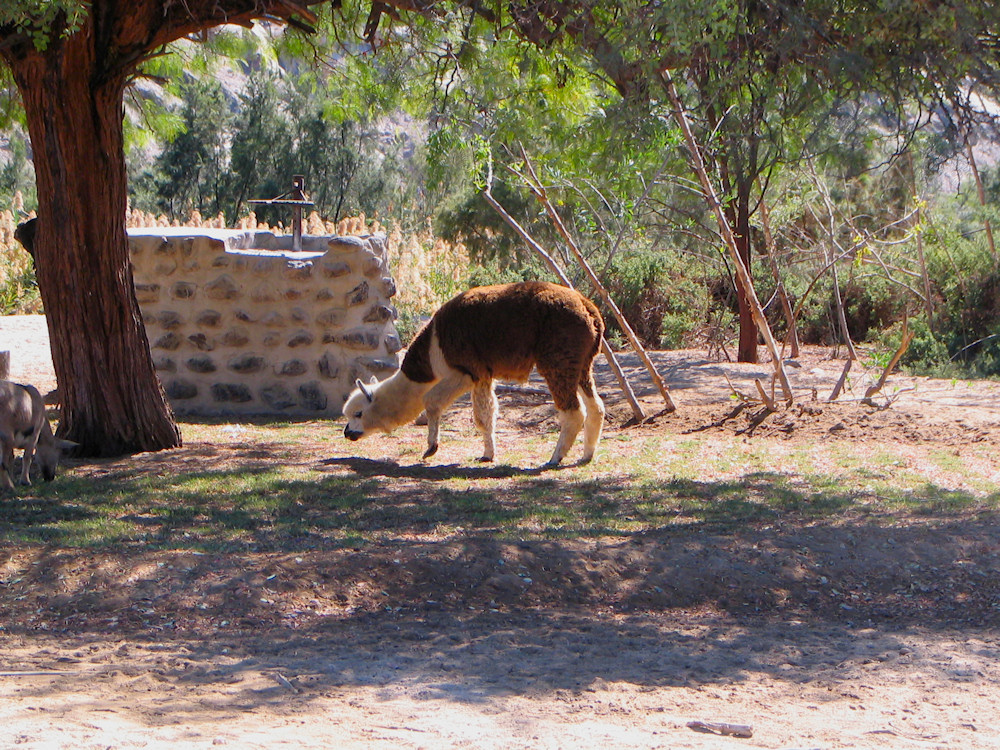
Goanikontes Oasis: There were plenty of farmyard animals wandering around the oasis, including this llama.
Photo courtesy Cindy Spies
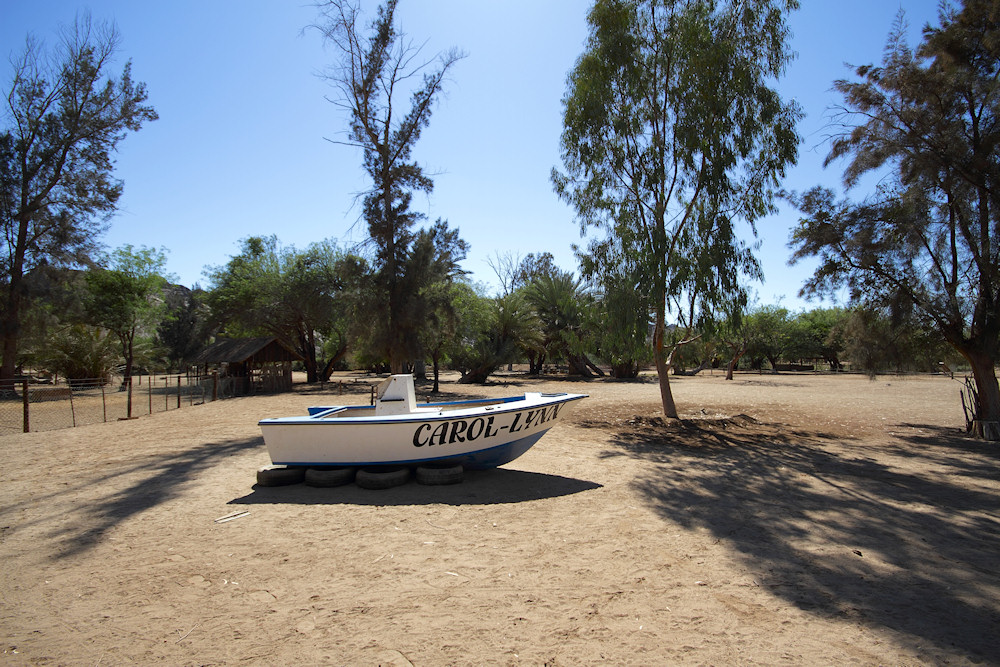
Goanikontes Oasis: in case the river comes down!
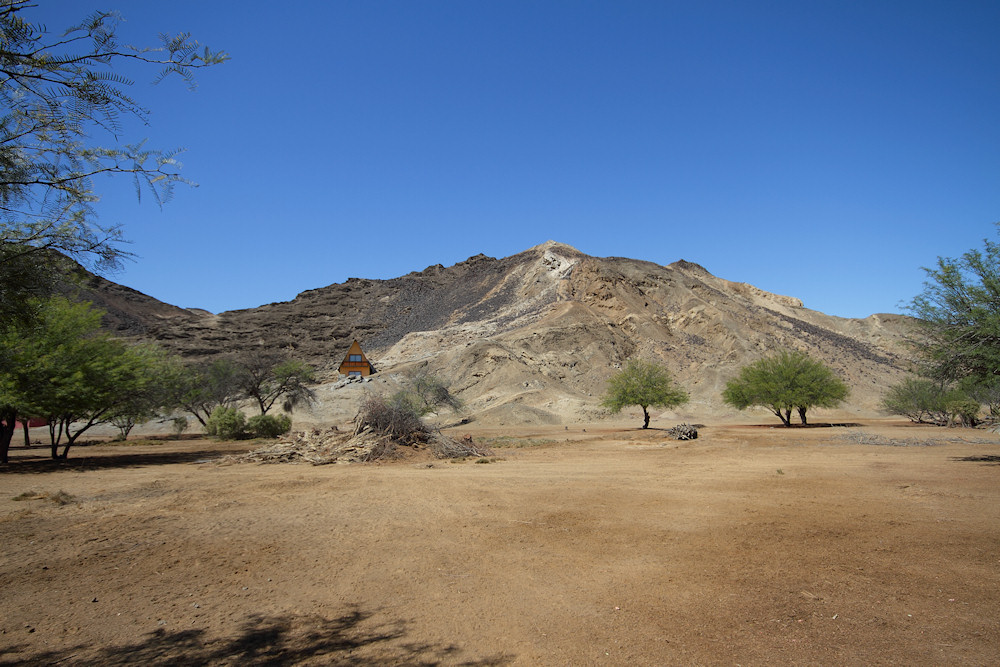
Goanikontes Oasis
After this, little walk, I was really very hot and tired. It was too late to have any refreshments at the restaurant, so I was really thankful for Ewald's cooler box on the bus. He had it stocked with refreshingly cool beverages (of the kind that I am very fond of) for a bargain price of N$10!
On reaching the top, after driving out of the Swakop River valley, we stopped at a viewsite to take pictures over the valley and the Moon Landscape area.
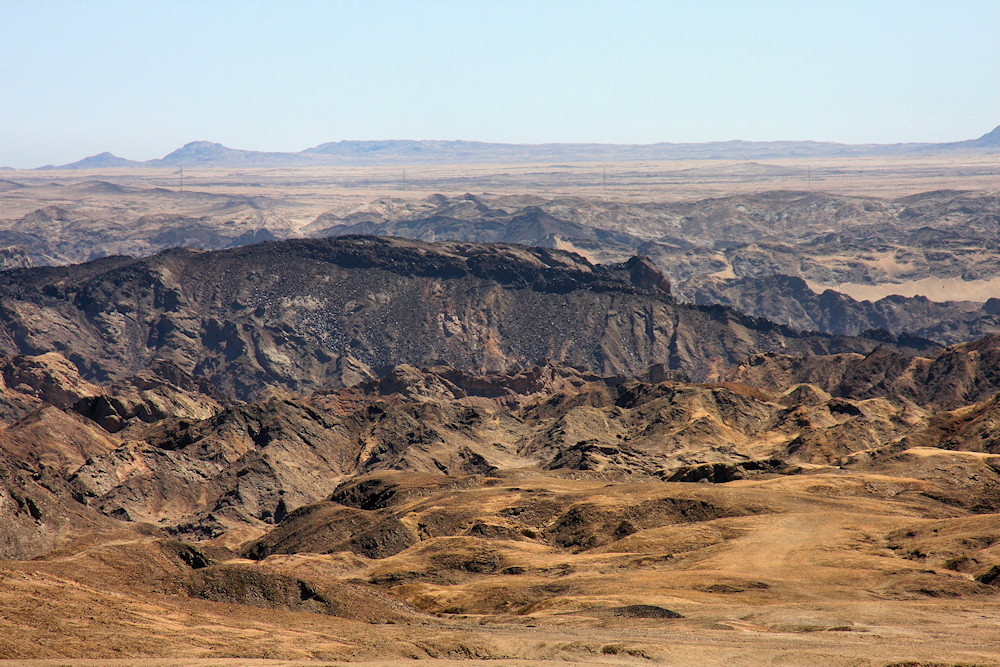
A view across the Swakop River valley over the Moon Landscape.
Photo courtesy Pat Carr
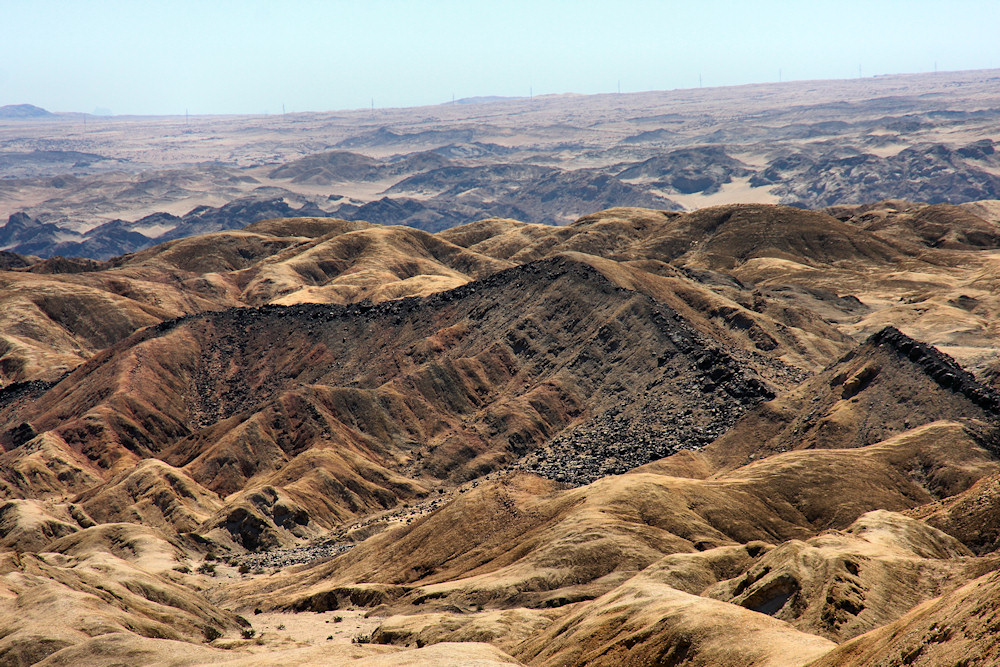
A view across the Swakop River valley over the Moon Landscape.
Photo courtesy Pat Carr
Welwitschias
Our next stop was to view welwitschias, an ancient plant endemic to the Namib Desert.
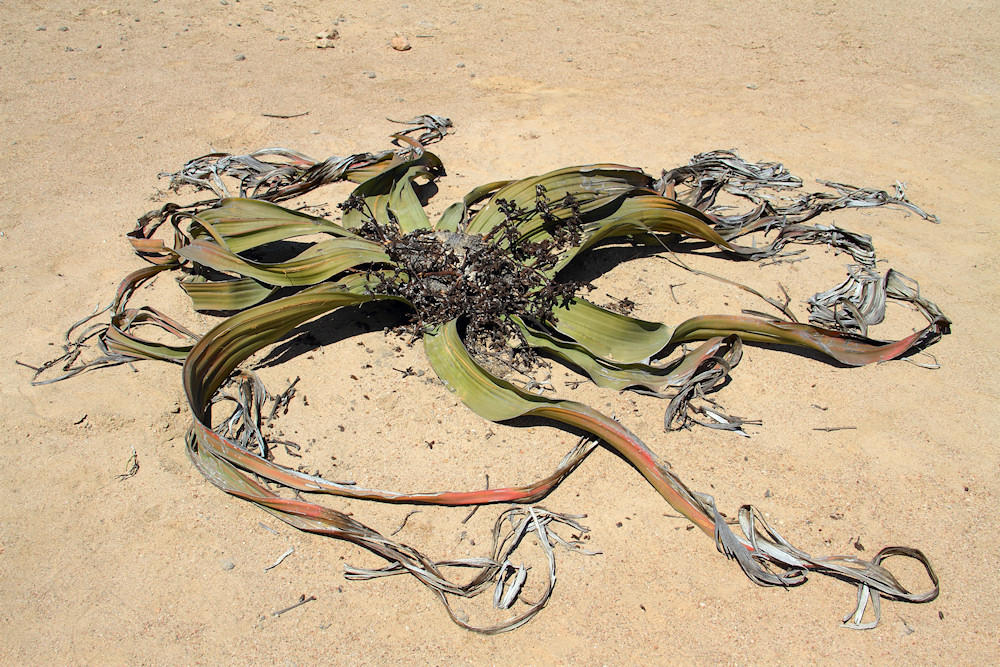
Male Welwitschia
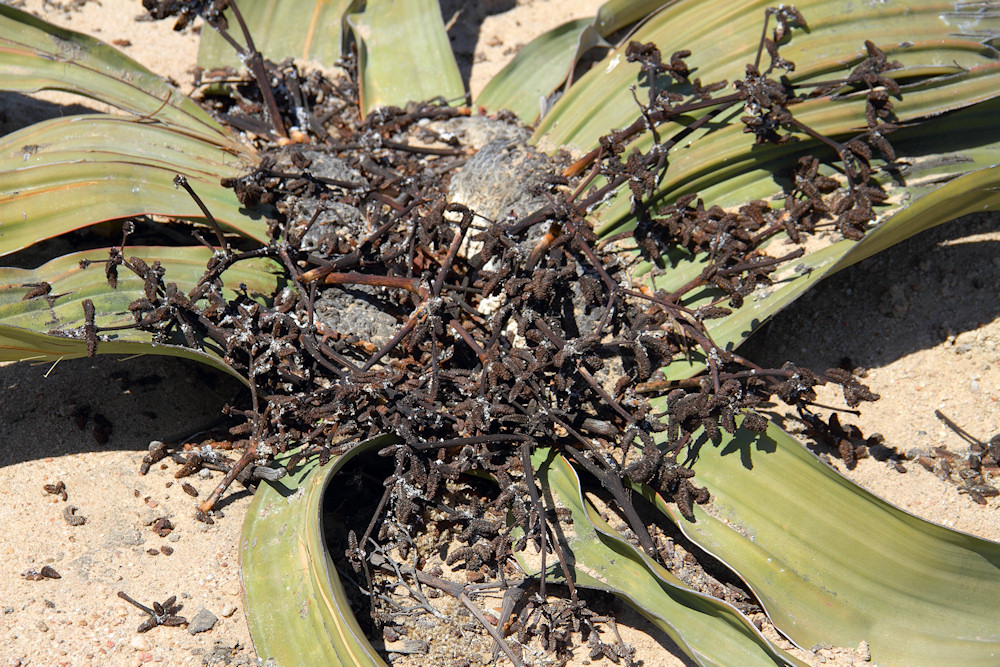
A closer view of the flowers of the male Welwitschia. Unfortunately, these are going off.
Roughly 100m away, there was a female plant.
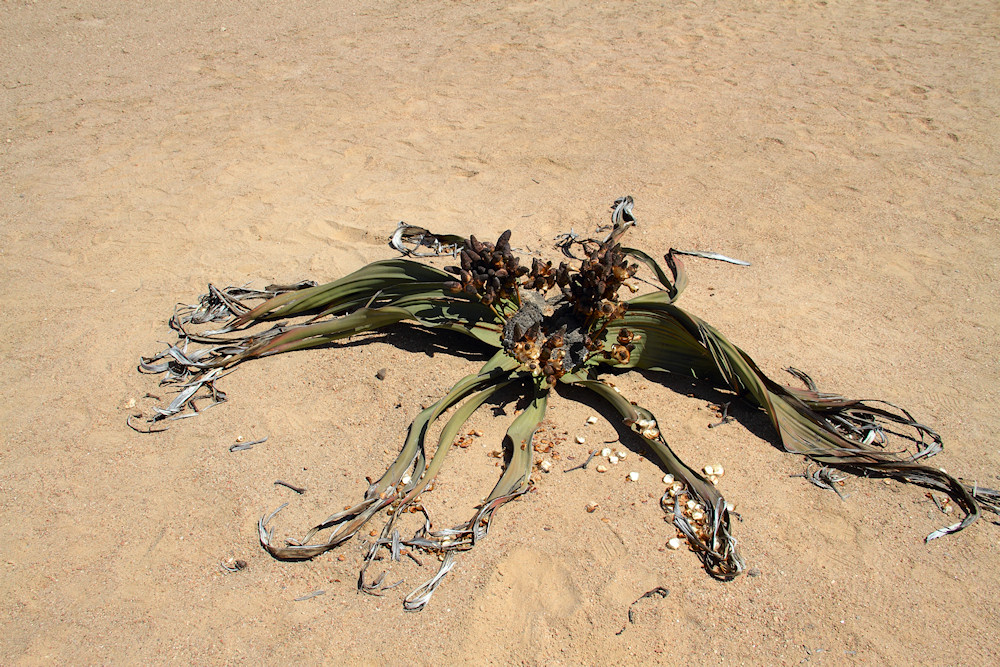
Female Welwitschia
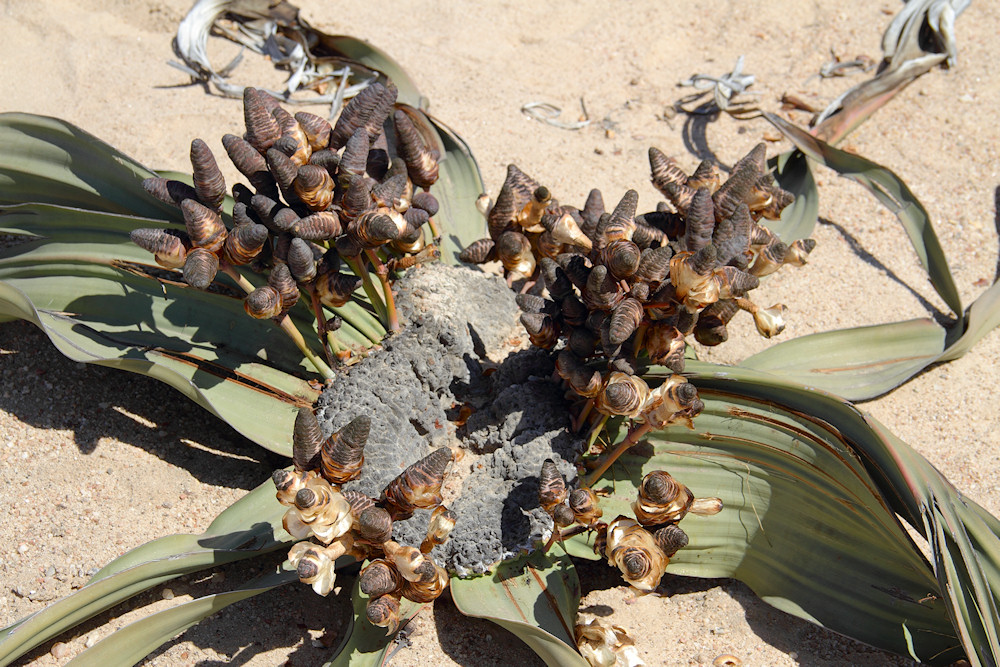
A closer view of the flowers of the female Welwitschia. These are in much better condition than those of the male.
According to Kobus, the welwitschias are coming under increasing threat from unscrupulous joyriders in their 4x4s. The roads are unfenced, so one sees thousands of wheel tracks going off the main road into the desert, in spite of signs saying keep to the road. Where these go over a welwitschia, the plant stands no chance of surivival. In addition to the welwitschias, thare are other tiny shrubs which also get flattened.
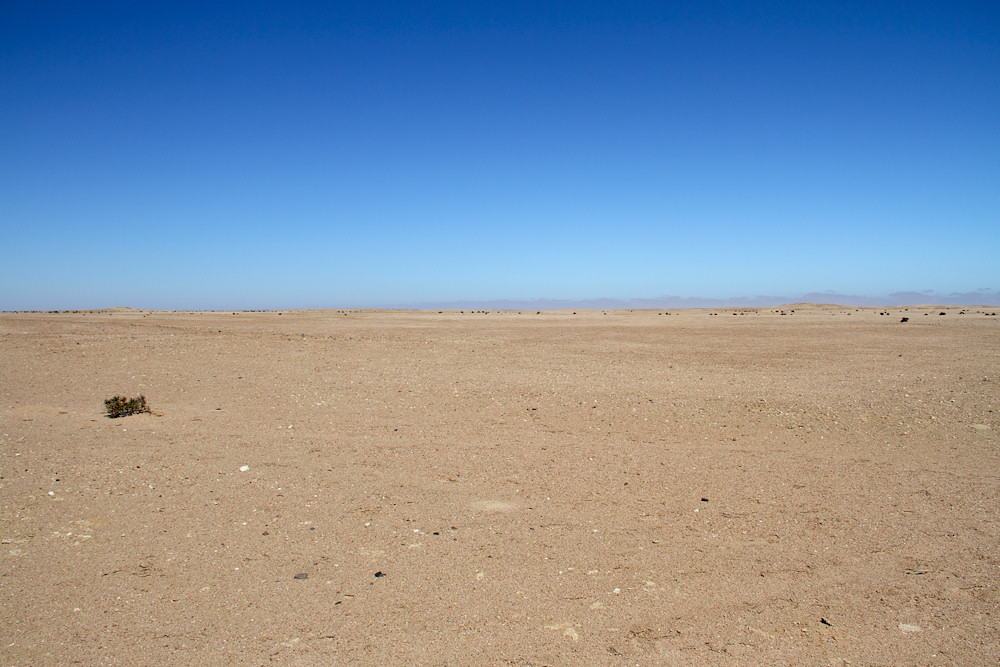
Showing some of the small shrubs in the desert. Notice the wheel track in the right foreground.
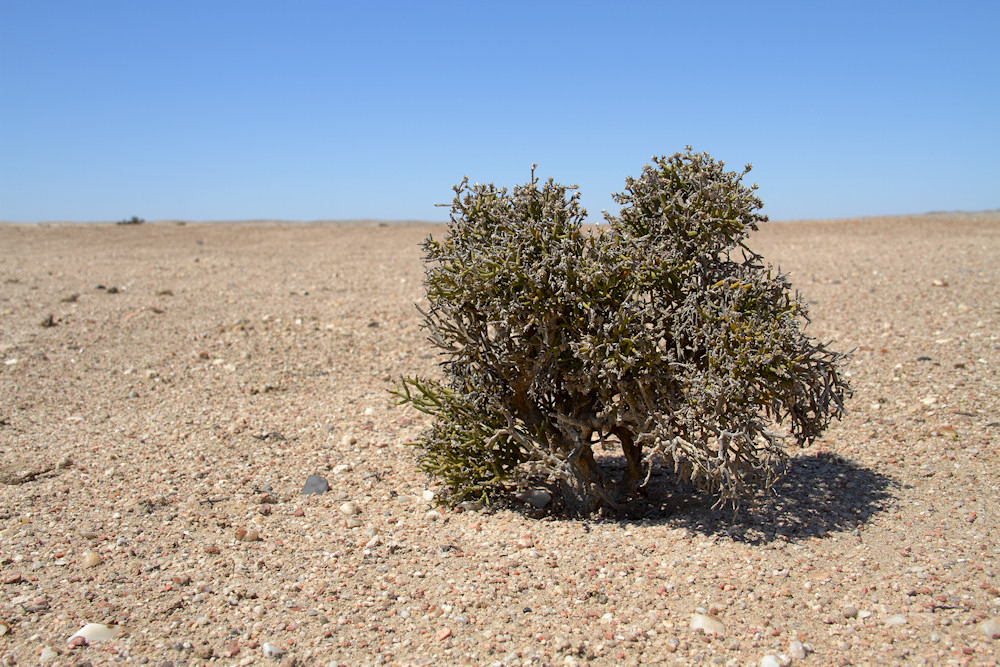
A mouse eye view of one of those small shrubs.
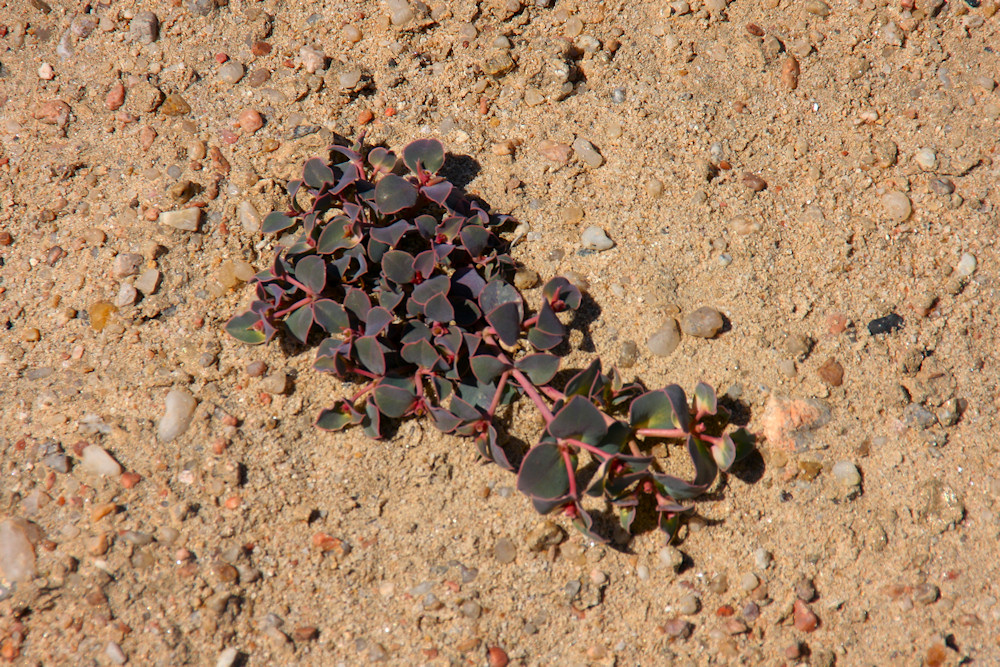
Another small shrub.
Photo courtesy Pat Carr
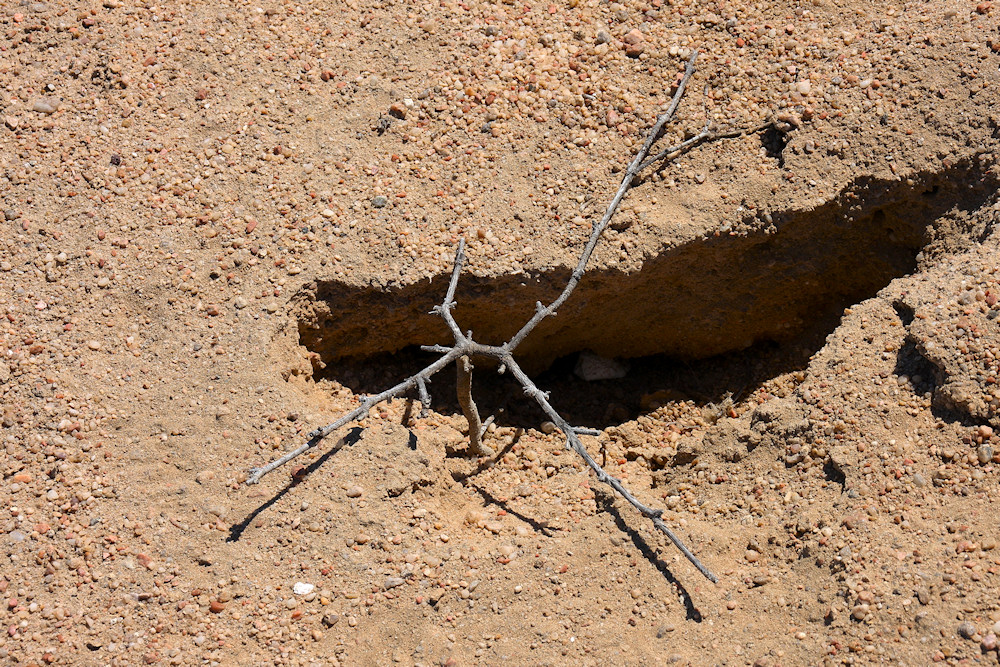
Another small shrub - this one waiting for the rain.
Photo courtesy Pat Carr
Pat also managed to get some pictures of the lichen.
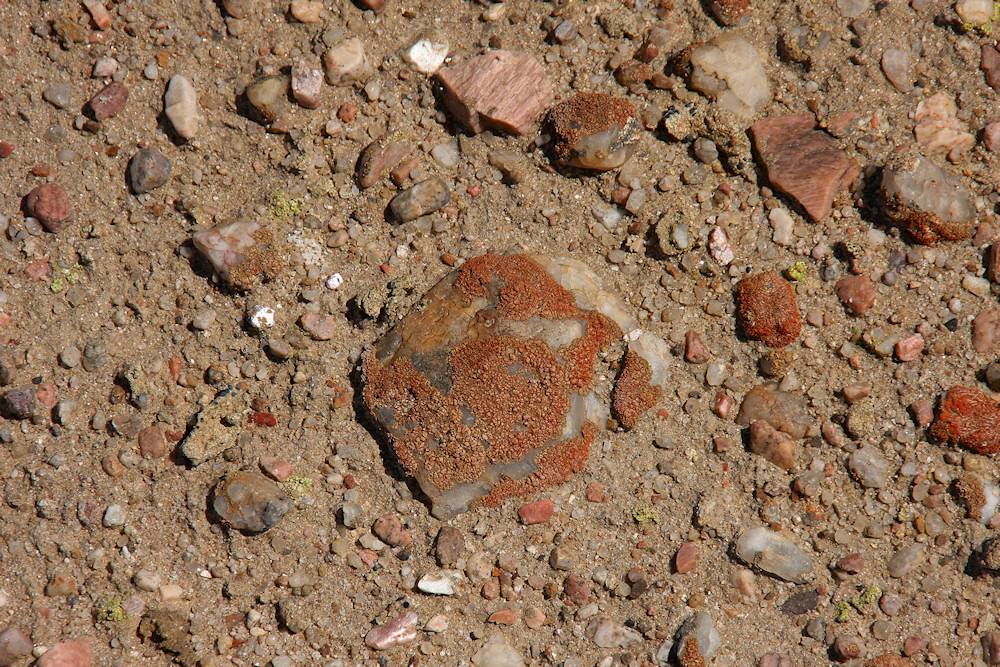
Lichen
Photo courtesy Pat Carr
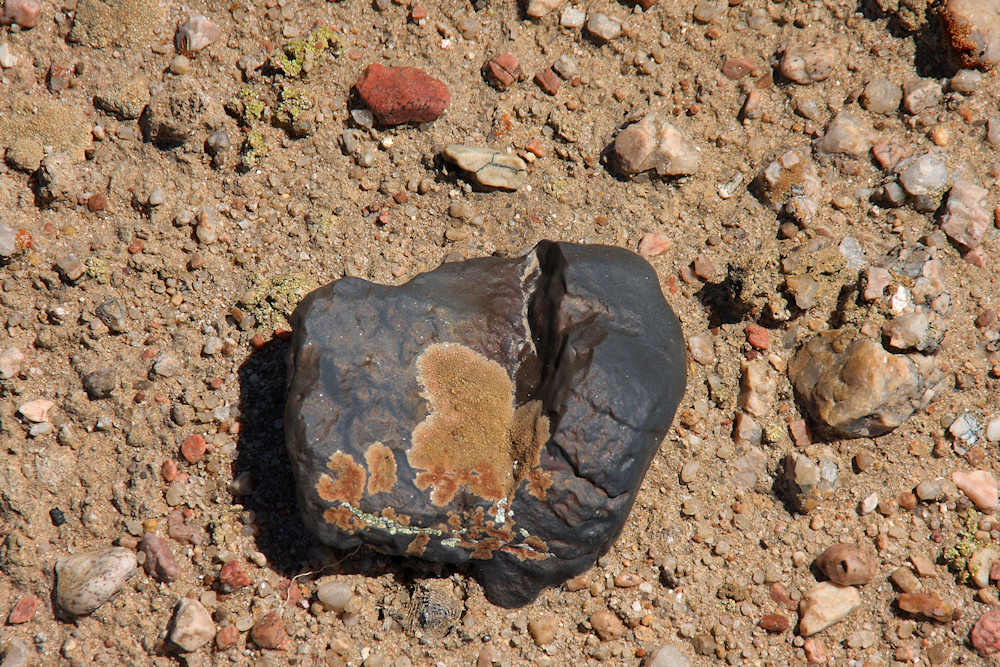
Lichen
Photo courtesy Pat Carr
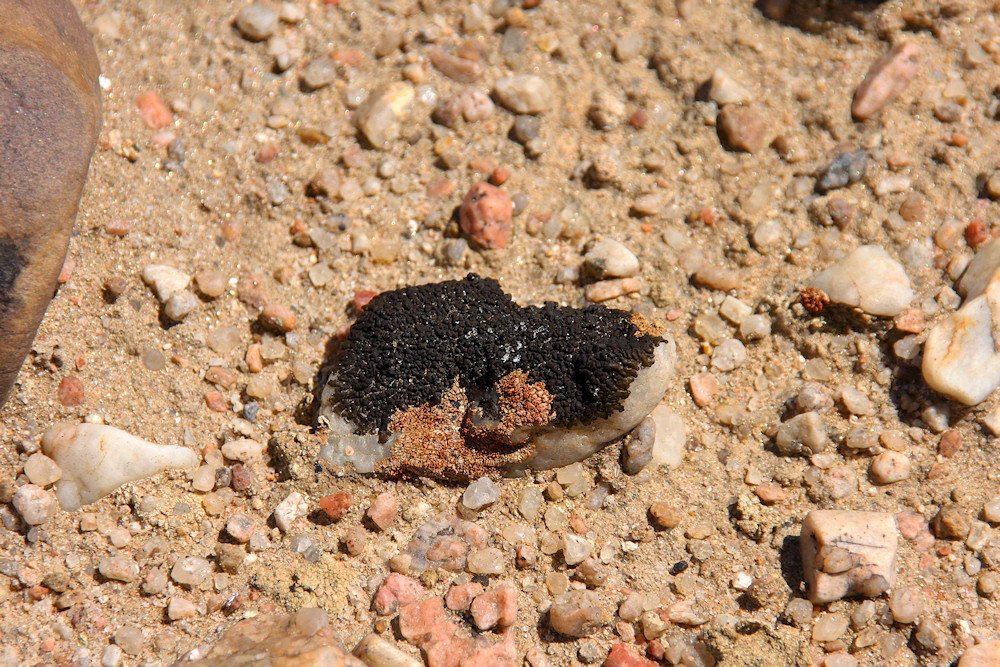
Lichen
Photo courtesy Pat Carr
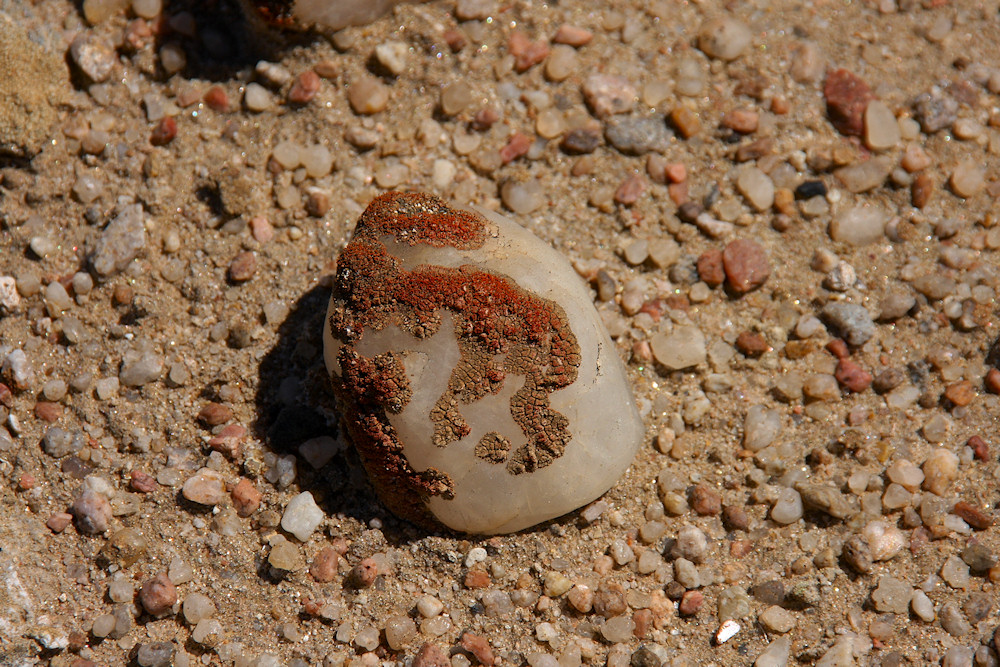
Lichen
Photo courtesy Pat Carr
From these last few pics, one can see how delicate the lichen is. You can easily see how the tyres from an off-road vehicle can destroy this without the driver even knowing what he has done.
Dune 7
We then moved on to the famous Dune 7 just outside Walvis Bay. This is purported to be the highest dune in the Namib Desert. Here folks got a chance to climb the dune before lunch. Pat and I stayed behind to take pictures of the adventurers.

Dune 7: The sprint up the dune.
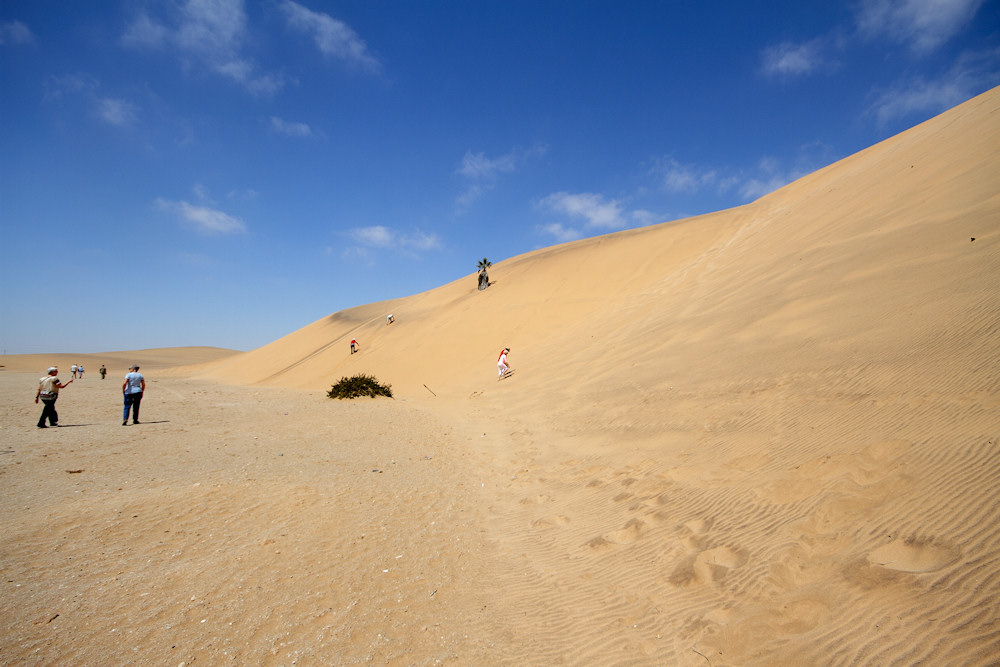
Dune 7: Others tried an indirect approach.
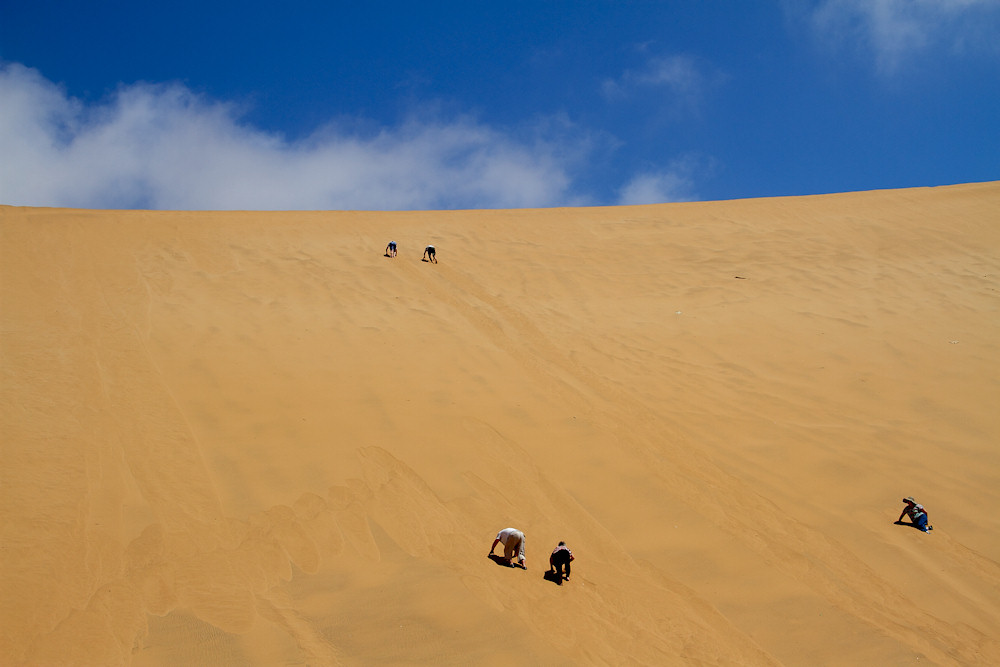
Dune 7: And then there was the novel approach!
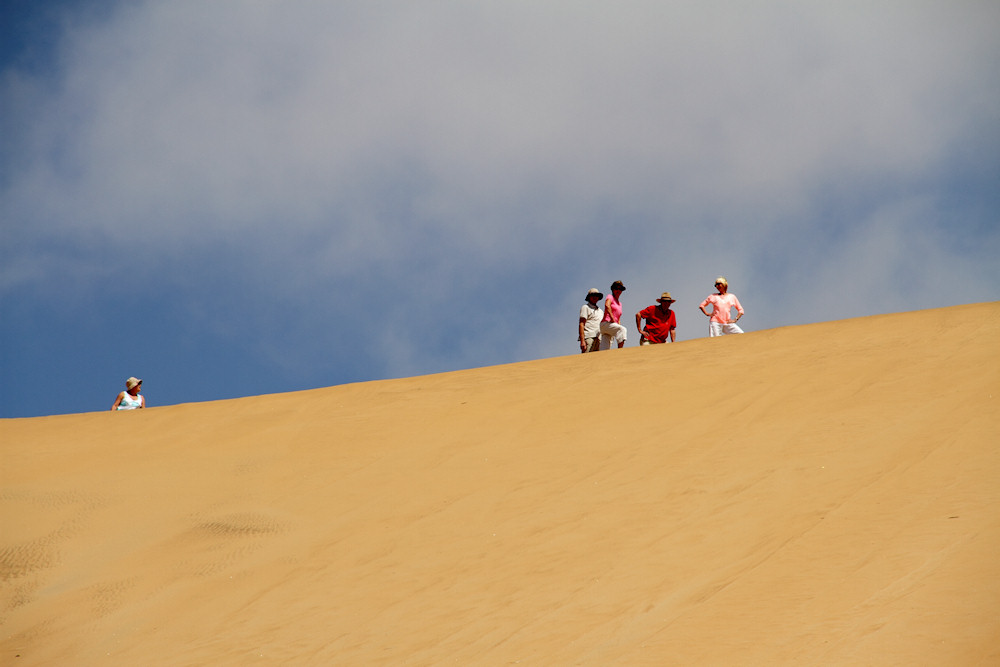
Dune 7: Many folks did get to the top.
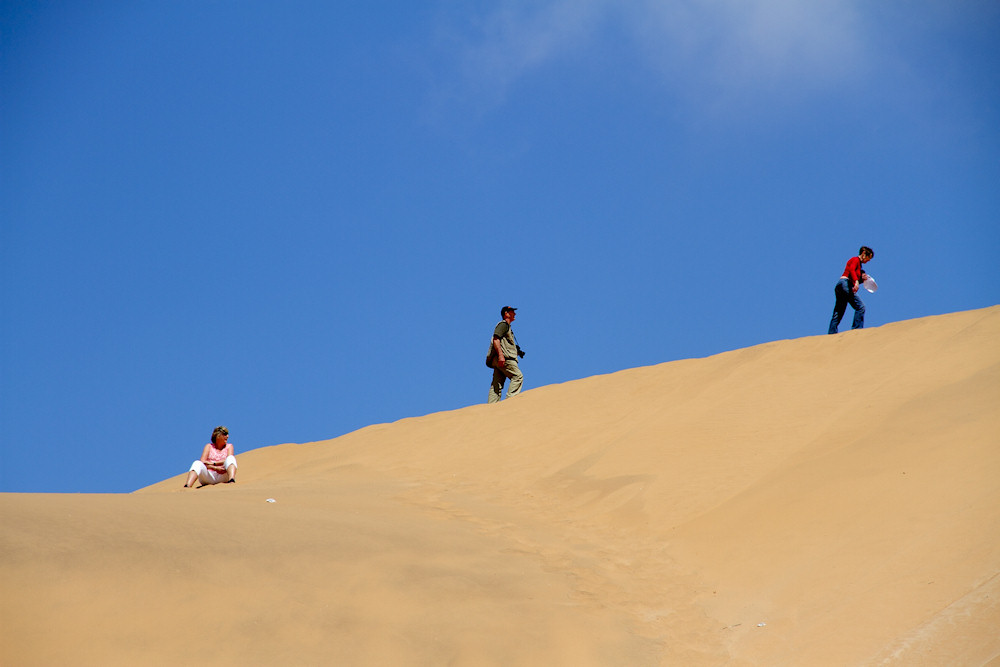
Dune 7: Many folks did get to the top.
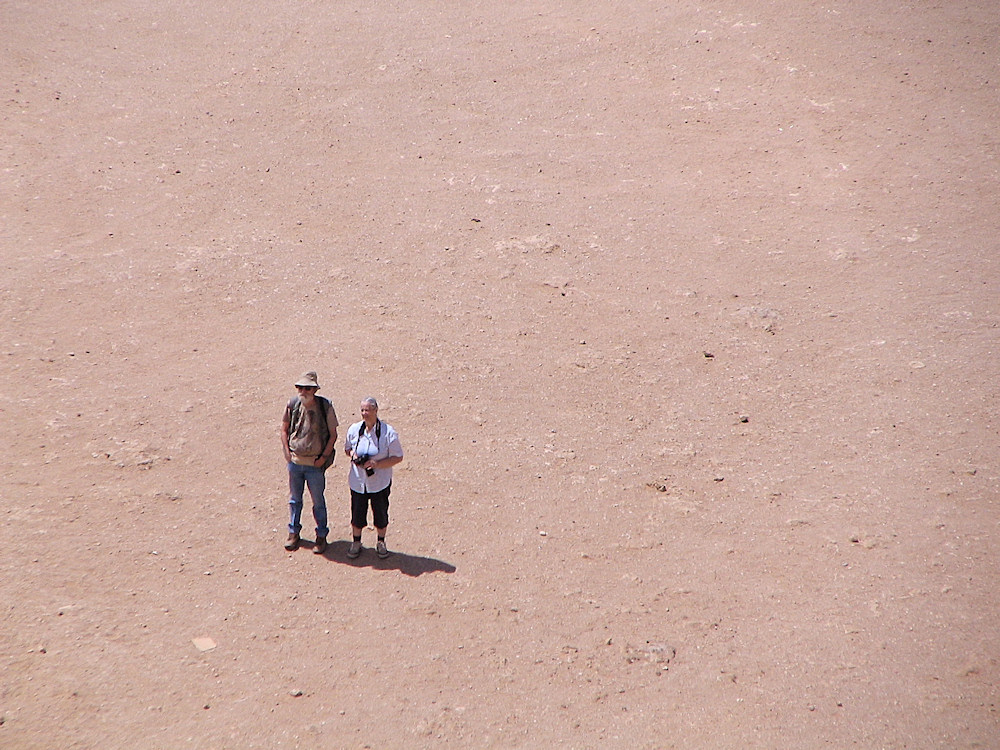
Dune 7: Yours truly and Pat at ground level.
Photo courtesy Cindy Spies
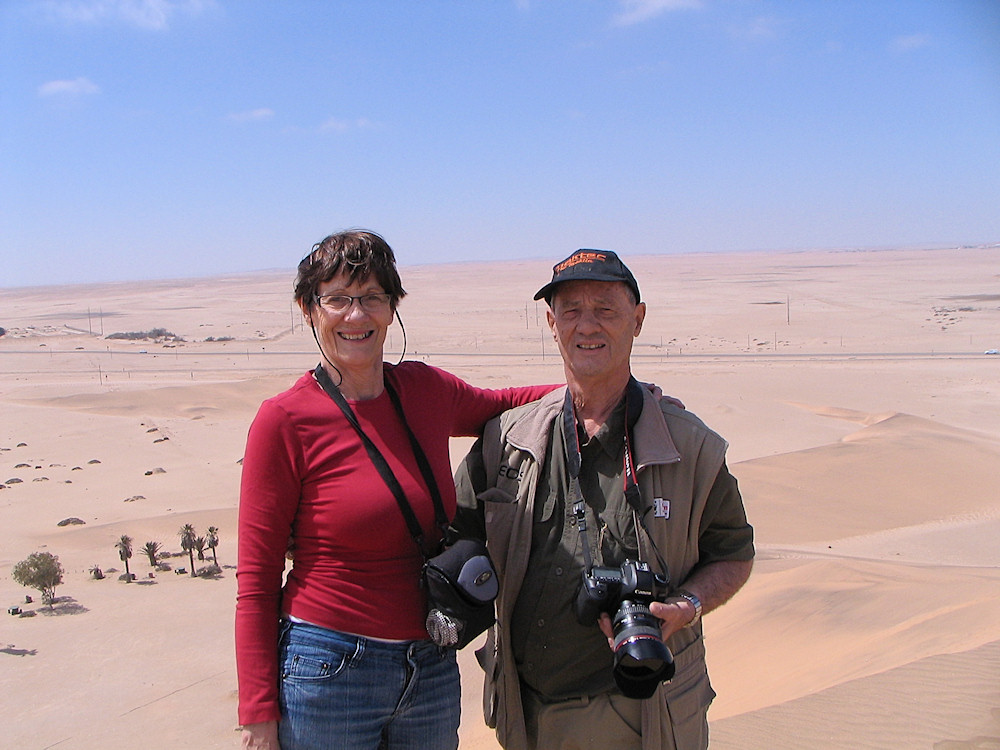
Dune 7: Cindy and Ray on the top of the dune.
Photo courtesy Cindy Spies
Of course, now the fun was getting back down!
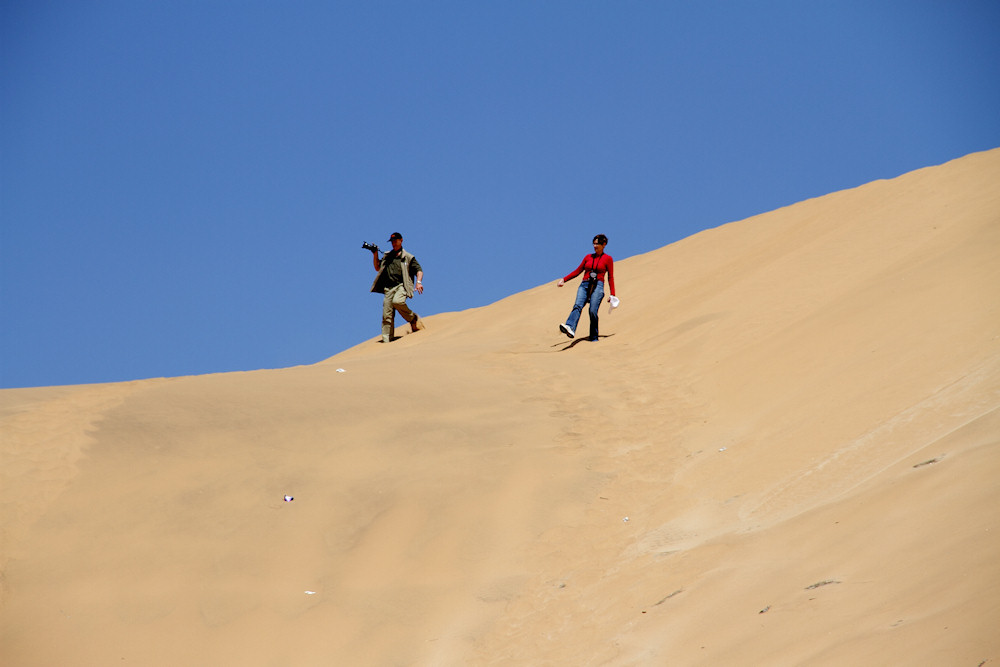
Dune 7: Coming down on foot was popular.
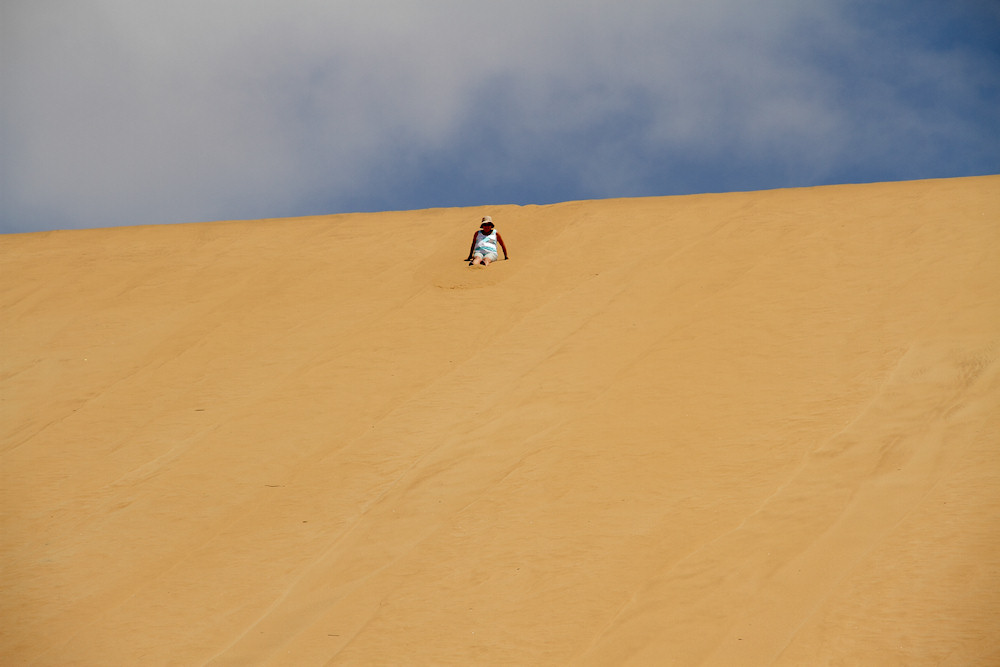
Dune 7: But so was the bum slide!

Dune 7: Andy doing the bum slide!
After the fun and games on the dunes, we went for lunch at the Dune 7 Restaurant and Bar at the turnoff to the the main road from the dune. Kobus had phoned our orders through while en route, so getting and eating lunch was done with a minimum of fuss.
Flamingos: Walvis Bay
After lunch we headed into Walvis Bay, via a little detour organised by the Namibian Traffic Police, through a weighbridge. We then headed on to our first sighting of flamingos on the trip. The flock contained mixed Lesser and Greater Flamingos. The Lesser Flamingos being slightly smaller, with a predominantly black bill, while the Greater Flamingos were larger, with a predominantly pink bill.
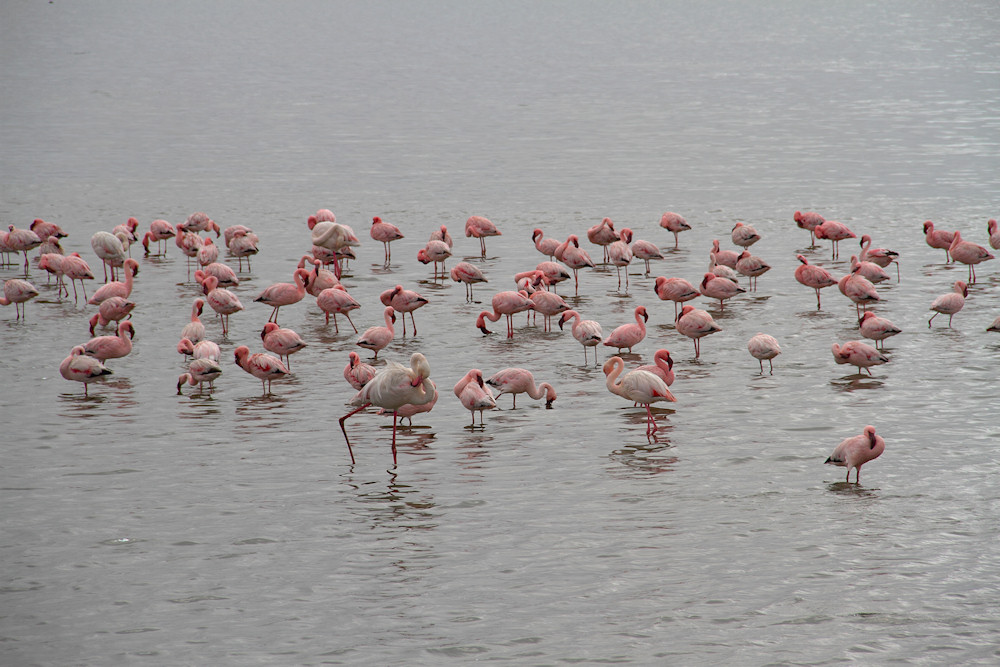
A flock of predominantly Lesser Flamingos, with a Greater Flamingo in the foreground.
As you can see from the flamingos tucking their bills in, it was not very pleasant out there, with a very chilly wind blowing off the sea. Our schedule was for a 30 minute stop, but I think everyone was back on the bus within 10 minutes - a record!
From here, we headed back to the train in Swakopmund via the coastal road. In Swakopmund, we first drove around around the town, where Kobus pointed out the important buildings.
